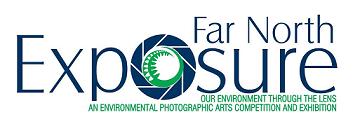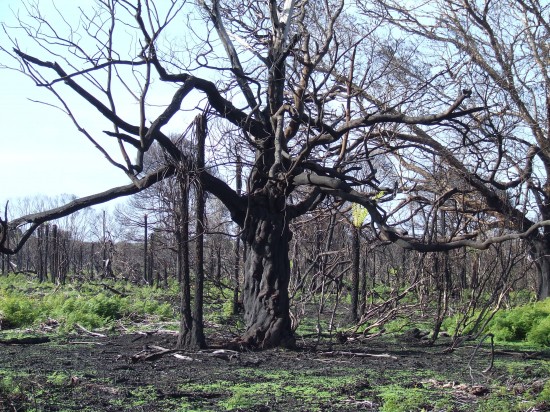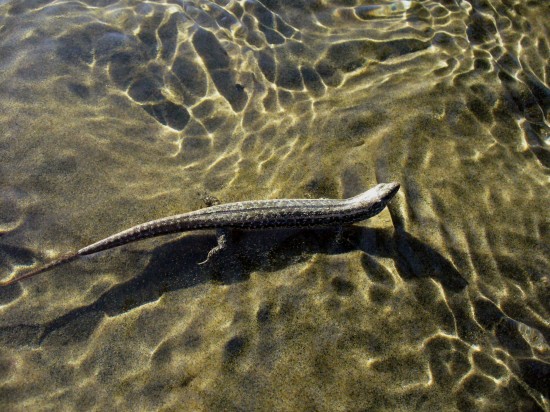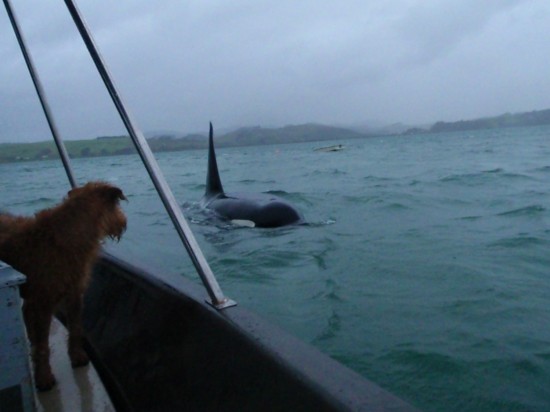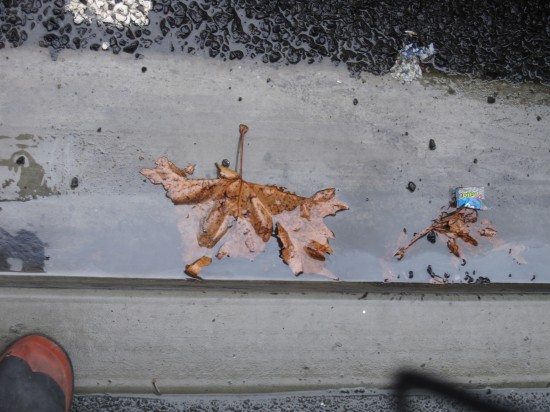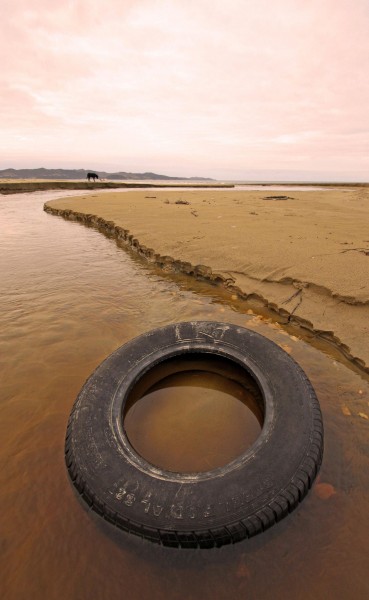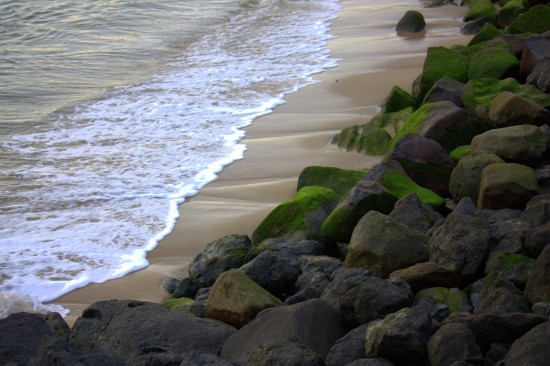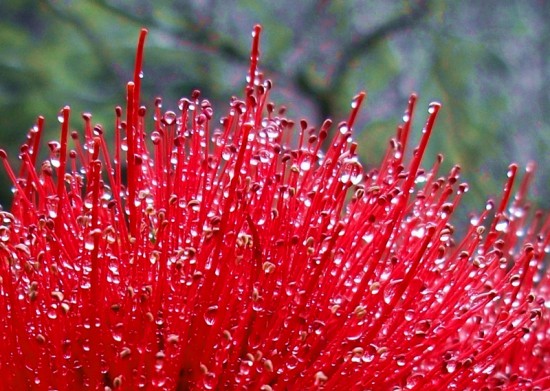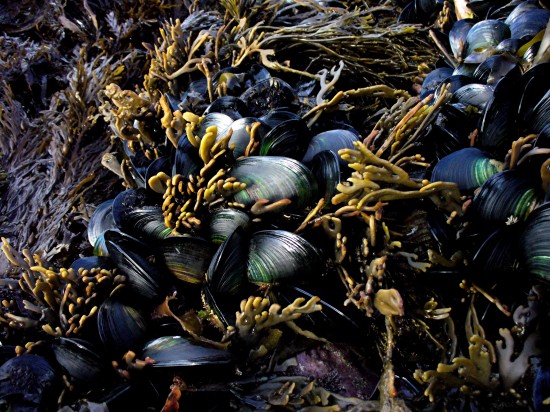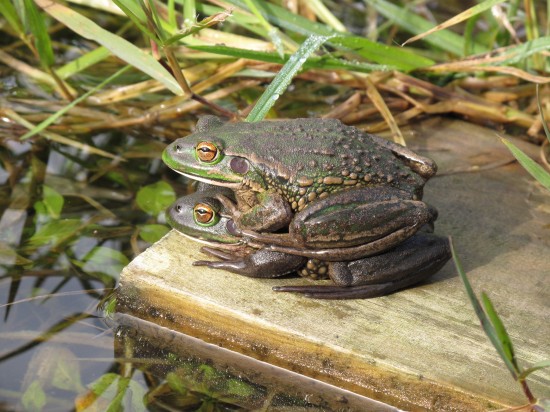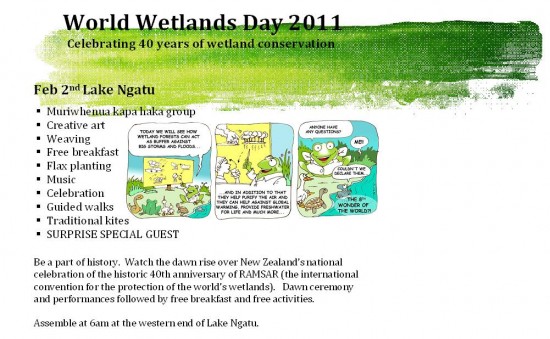Take a look at the reality of a modern highly mechanised food industry. An industry that puts profit ahead of consumer health, the livelihood of the farmer, and the safety of workers and the environment. We have bigger chickens, perfect pork chops, herbicide-resistant soybean seeds, even tomatoes that won't go bad, but we also have new strains of E. coli. There is widespread obesity, particularly among children, and an epidemic level of diabetes among adults. Surprising—often shocking truths—about what we eat, how it's produced, and where we are going from here. All welcome – koha only. Bring a plate and join us
FOOD INC: Screening 6.30pm this Friday, February 11 at REAP, Kaitaia
Posted 14 years, 5 months ago 4 comments
Invasive Argentine Ants Discovered at Popular Far North Campground
Posted 14 years, 5 months ago 1 comment
Department of Conservation staff in Kaitaia are in the throes of planning a major control operation after confirming the presence of highly invasive Argentine ants at Taputaputa Campground in the Far North earlier this week.
The ants were confirmed on Wednesday morning, and DOC staff have been carrying out a survey to determine their exact location. The ants have been pinpointed to a small area adjacent to the stream.
Kaitaia Area Manager, Jon Maxwell, says that since the ants were confirmed, the affected area has been closed off and planning has been underway to begin an eradication operation as quickly as possible.
“We’ve informed iwi of the situation and the need to act fast. Argentine ants are one of the biggest threats we have to the native plants and animals in the area. They form super colonies and will eat anything in their path; plants, baby birds, lizards, snails, basically nothing is safe”, says Mr Maxwell.
Argentine ants first arrived in New Zealand in 1990. Since then they have spread across the country, including many parts of Northland. However Te Paki has been kept clear. Until now.
Mr Maxwell said the Department has had a regular monitoring programme in place at Te Paki, as well as a strict quarantining regime for its staff working in the area, as well as bee keepers and contractors.
“On the positive side, because of our regular monitoring we’ve been able to detect the ants quickly and early, giving us the chance to get rid of them before they have a chance to establish themselves,” says Mr Maxwell.
An eradication treatment day is planned for the 10th February, weather permitting.
“We need three days of fine weather either side of the treatment days, so we are hopeful of getting stuck in on Thursday. However we will have to keep an eye on the weather,” explains Mr Maxwell.
Another treatment day will be carried out 6-8 weeks after the initial one. Mr Maxwell said the camp will be closed during the treatment days, although camping will still be available in the day area. Signage will also be in place in the treatment area to advise people of when the control operation is happening.
“We have a number of tourist operators that use the day area as a lunch stop, so some patience will be required on their part. However given the gravity of the situation and the need to do whatever it takes to get rid of these ants, I’m sure everyone will be willing to work together,” says Mr Maxwell.
To get more information about Argentine ants or the eradication programme click on the PDF download files below or contact:
DJ Neho
Programme Manager Biodiversity Threats
Department of Conservation
Kaitaia Area Office
Phone: 09 408 6014
Address: 25 Matthews Ave, Kaitaia 0441.
Wastebusters Demystifying Packaging Project: Competition
Posted 14 years, 5 months ago 2 comments
Are you one of the 85% of New Zealanders who are concerned about the amount of packaging you have to deal with? Are you fed up dealing with over-packaging and packaging that can’t be reused or recycled?
Now’s your chance to do something about it. Put a nomination into the 2011 Unpackit Packaging Awards, and get some recognition for companies who are setting the standard in packaging. There are two categories: the Best Packaging sold in NZ and the Worst.
The www.unpackit.org.nz site also has lots of information about choosing good packaging, including how to spot greenwash and why product stewardship could help.
Looking for good packaging? Use these five easy questions as a starting point:
- Is it minimal?
- Is it well-designed?
- Is it reusable over and over again?
- Is it recyclable?
- Is it clearly and accurately labelled?
Click here for more information on the unpactit.org.nz website!
Save the Mokihinui: Too Precious to Dam
Posted 14 years, 5 months ago 1 comment
Nestled under the western shoulder of Kahurangi National Park, the Mokihinui is the West Coast’s third largest river, draining the vast uplands and mountains of the Lyell, Radiant, Allen, Glasgow and Matiri Ranges.
Falling steeply through granite and limestone gorges, emerging to meander across open flats, before gathering all its waters together the Mohikinui makes a determined charge for the coast through a steep earthquake-shattered gorge.
Become a Forest & Bird Mokihinui Campaigner by clicking here.
Flanked by beech forests, ancient podocarps, riotous displays of rata, and rimu festooned with kiekie, the river alternately dashes across granite and greywacke boulders, and glides through deep pools, as it twists and turns through the gorge.
Living in the river are blue duck (whio), longfin eel, giant kokopu, and a rich array of other native species. The river and surrounding forest land provide habitat for 16 threatened species. Long-tailed bats, western weka, kereru, and powelliphanta snails inhabit this ecological niche.
New Zealand’s own database of water-bodies of national importance ranks the Mokihinui 7th for its natural values.
A Watery End: The Meridian Dam
At the mouth of this deeply incised granite gorge, Meridian Energy has proposed a vast hydro scheme –an 85 metre high dam that would radically changing this spectacular gorge. Recently this state-owned enterprise was given resource consent to go ahead with this proposal.
If this goes ahead, fourteen kilometres of gorge will disappear under 80 metres of water; 330 hectares of river bed and forest will be flooded; habitat will lost again! It’s all in the name of ‘generating more power’. Yet it’s the biodiversity and wilderness that pay the biggest cost.
Many endangered species will meet a watery death, or be rudely shunted from their homes if the dam is given the green light.
Forest & Bird, along with DOC and other NGOs have started the expensive and time-consuming task of appealing this decision. The hearing is not until early 2012, but with sufficient public pressure there is a chance we can stop it before it goes to the courtroom! Help Forest & Bird by becoming an activist.
For more information on Forest & Bird's appeal see here.
Save the Mokihinui: Damn the Dam
Meridian Energy is a state-owned enterprise, owned by our government on behalf of the people of this country. With political will, other energy options exist.
Campaign Details
Forest & Bird branches working on this campaign:
More Forest & Bird campaigns in this region:
Who will get evicted from the Mokihinui:
Blue Duck (whio)
One of only two torrent ducks in the world, the Blue Duck (whio)thrives in our fast-flowing rivers such as the Mohikinui. Damming the river will destroy their habitat, with the birds who live in the gorge perishing as a result.
Powelliphanta or giant land snail
Evolving millions of years ago, our threatened Powelliphanta or giant land snails are carnivorous, and largely confined to the North West of the South Island. A dam would flood all their lowland habitat, and interrupt their natural process of colonising through the gorge in flood events.
Longfin eels
Longfin eels can live to over 100 years old, and migrate downstream once in their life to reproduce at sea. The dam would block migration. Eels are on the decline throughout the country due to loss of habitat through dams.
Western weka
Western weka are incredibly inquisitive native birds. Decline of weka populations has been dramatic. The gorge offers a valuable home for these iconic species. Great spotted kiwi also rummage through the forest floors here.
Beach water quality: NRC results for week starting 01 February 2011
Posted 14 years, 5 months ago 1 comment
Each summer, Northland Regional Council test the water quality at a number of Northland’s popular coastal and freshwater swimming spots to make sure it’s safe for swimming.
Some results this week are still high as a result of the heavy rain from ex-tropical cyclone Wilma. Between 60-200mm of rain fell across most of Northland during the storm on 28-29 January.
NOTE: A Public Health Advisory was issued by Northland District Health Board following ex-tropical cyclone Wilma. View the Public Health Advisory here
Beach water quality for week starting 01 February:
Warning signs have been placed by District Councils at the following sites (please see all the results below)
- Kowharewa Bay
- Ohawini Bay
- One Tree Point
- Matapouri 1st Bridge
- Matapouri 2nd Bridge
- McLeod Bay
- Urquharts Bay
- Whananaki East Beach
- Whananaki footbridge
- Kerikeri Skudders Beach
- Opua Foreshore
- Paihia Waitangi Bridge
- Tinopai below shops
Status system
NRC give a three tier status system for swimming water quality. This is based by assessing the risk of contamination at a beach swimming site using levels of the indicator bacteria Enterococci. Find out more about what NRC test for
 Green: safe to swim
Green: safe to swim
Enterococci count less than 140/100ml

Orange: caution, potentially unsuitable to swim
Enterococci count more than 140/100ml
 Red: unsafe to swim
Red: unsafe to swim
Enterococci count more than 280/100ml
This weeks' results:
Far North
Full weekly results available below. View a map of the testing sites.
To view an aerial photo map of the location where the samples were gathered, click on the site name link.
| LOCATION | Site No. | Status | Result |
| Ahipara, in front of campground | 109871 |
|
111 |
| Matai Bay, in front of campground | 102326 |
|
10 |
| Shipwreck Bay | 109870 |
|
10 |
| Tokerau Beach at Melissa Road | 109872 |
|
10 |
| Waipapakauri | 109873 |
|
<10 |
North East (Coopers Beach to Matauri Bay)
Full weekly results available below. View a map of the testing sites.
To view an aerial photo map of the location where the samples were gathered, click on the site name link.
| LOCATION | Site No. | Status |
Result |
| Cable Bay | 105780 |
|
10 |
| Coopers Beach | 101066 |
|
150 |
| Matauri Bay | 102425 |
|
10 |
| Taipa | 105777 |
|
64 |
North West (Hokianga Harbour)
Full weekly results available below. View a map of the testing sites.
To view an aerial photo map of the location where the samples were gathered, click on the site name link.
| LOCATION | Site No. | Status | Result |
| Omapere | 102317 |
|
20 |
| Opononi | 106011 |
|
31 |
| Rawene | 100236 |
|
53 |
South West (Kaipara District)
Full weekly results available below. View a map of the testing sites.
To view an aerial photo map of the location where the samples were gathered, click on the site name link.
| LOCATION | Site No. | Status | Result |
| Baylys Beach | 109876 |
|
<10 |
| Glinks Gully | 100798 |
|
<10 |
| Omamari Beach | 109875 |
|
<10 |
| Pahi, 150m NW jetty | 102198 |
|
42 |
| Pahi, at rocky groyne | 102579 |
|
99 |
| Tinopai, below shops | 102310 |
|
137 |
| Tinopai, below Puapua Creek | 101232 |
|
<10 |
South East (One Tree Point to Mangawhai Harbour)
Full weekly results available below. View a map of the testing sites.
| LOCATION | Site No. | Status | Result |
| Lang's Beach, Mid-Beach | 108318 |
|
64 |
| Mangawhai, Motorcamp foreshore | 101210 |
|
137 |
| Mangawhai Heads, Beach | 109890 |
|
<10 |
| Mangawhai Harbour, Picnic Bay | 110322 |
|
53 |
| Mangawhai Harbour, at Pontoon | 110320 |
No data |
No data |
| One Tree Point | 109266 |
|
<10 |
| Ruakaka, River | 108314 |
|
659 |
| Ruakaka, Beach | 108315 |
|
10 |
| Uretiti Beach | 109888 |
|
10 |
| Waipu Cove | 108316 |
|
10 |
Bay of Islands and Oakura
Full weekly results available below. View a map of the BOI and Oakura testing sites.
| LOCATION | Site No. | Status | Results |
| Bland Bay | 109889 |
|
<10 |
| Kerikeri, Skudders Beach | 100974 |
|
1013 |
| Oakura, North Bay | 101345 |
|
31 |
| Ohawini Bay | 105388 |
|
137 |
| Opua, foreshore | 101418 |
|
384 |
| Paihia, Te Haumi | 101195 |
|
99 |
| Paihia, beside toilets | 101194 |
|
42 |
| Paihia, Waitangi Bridge | 101183 |
|
591 |
| Russell, Mid-North | 105710 |
|
192 |
| Teal Bay | 101331 |
|
99 |
Tutukaka
Full weekly results available below. View a map of the testing sites.
| LOCATION | Site No. | Status | Results |
| Church Bay | 105448 |
|
124 |
| Kowharewa Bay | 106444 |
|
178 |
| Matapouri, at first bridge (south bridge) | 100711 |
|
222 |
| Matapouri, at second bridge (north bridge) | 100712 |
|
178 |
| Matapouri, Beach | 110321 |
|
31 |
| Ngunguru, at Motor Camp | 100073 |
|
31 |
| Ngunguru, at Norfolk pine | 100076 |
|
31 |
| Ngunguru, at toilets | 108320 |
|
87 |
| Pacific Bay | 108313 |
|
<10 |
| Sandy Bay | 109879 |
|
10 |
| Wellingtons Bay | 109880 |
|
87 |
| Whananaki, footbridge | 103147 |
|
84 |
| Whananaki, East beach | 106938 |
|
42 |
| Woolleys Bay | 109878 |
|
<10 |
Check before you swim
In general, water can be contaminated and unsafe for swimming if:
- there is a warning sign erected indicating water is unsafe.
- there has been heavy rain recently.
- the water looks dirty (murky).
- there are several potential sources of contamination nearby and upstream such as:
- houses on septic tanks;
- stock with access to the water; or
- a sewage treatment plant discharge.
Who to contact
NRC are responsible for routine surveillance monitoring. These results are sent to the District Councils and Northland Health, who then carry out follow-up sampling as required and warn the public of any swimming sites that may be unsafe.
For information about a specific area or a warning sign contact your local District Council or the on-duty Health Protection Officer at Northland Health.
Far North District Council
Freephone: 0800 920 029
Whangarei District Council
Phone: 09 430 4200
Kaipara District Council
Phone: 09 439 7059
Northland Health
Phone: 09 430 4100
For general information contact:
Northland Regional Council
Freephone: 0800 002 004
Freshwater quality: NRC results for week starting 01 February 2011
Posted 14 years, 5 months ago 1 comment
Each summer, Northland Regional Council test the water quality at a number of Northland’s popular coastal and freshwater swimming spots to make sure it’s safe for swimming.
Some results this week are still high as a result of the heavy rain from ex-tropical cyclone Wilma. Between 60-200mm of rain fell across most of Northland during the storm on 28-29 January.
NOTE: A Public Health Advisory was issued by Northland District Health Board following ex-tropical cyclone Wilma. View the Public Health Advisory here
Freshwater quality for week starting 01 February:
Warning signs have been placed by District Councils at the following sites (please see all the results below):
- Ocean Beach Stream
- Otamure Bay Stream
- Lake Waro
- Whangarei Falls
- Raumanga Stream
- Waipu Cove Stream
- Langs Beach Stream
- Ruakaka River
- Coopers Beach Stream
- Aurere River
- Waipoua River at DoC headquarters
Status system
NRC give a three tier status system for swimming water quality. This is based by assessing the risk of contamination at a freshwater swimming site using levels of the indicator bacteria Escherichia coli (E. coli). Find out more about what NRC test for
 Green: safe to swim
Green: safe to swim
E. coli less than 260/100ml

Orange: caution, potentially unsuitable to swim
E. coli count more than 260/100ml
 Red: unsafe to swim
Red: unsafe to swim
E. coli count more than 550/100ml
This weeks' results:
The table below shows the most recent results for all the freshwater sites sampled in Northland. All locations are in alphabetical order.
| LOCATION | Site No. | Status | Result |
| Aurere River, at Aurere Beach Road | 110324 | .jpg) Red: Red:Unsafe to swim |
1565 |
| Coopers Beach Stream | 101870 |
|
650 |
| Kaihu River, at campground | 102221 | .jpg) Green: Green: Safe to swim |
231 |
| Kapiro Bridge, at Purerua Road | 102838 |
|
272 |
| Kerikeri, Stone Store | 101530 |
|
305 |
| Lake Coca Cola | 110323 |
|
345 |
| Lake Ngatu, south end | 100402 | .jpg) Green: Green: Safe to swim |
86 |
| Lake Taharoa | 105434 |
|
10 |
| Langs Beach, toilets | 100686 |
|
187 |
| Ocean Beach Stream | 102077 | .jpg) Red: Red:Unsafe to swim |
933 |
| Omamari Beach Stream | 102305 |
|
341 |
| Otamure Bay Stream | 108859 |
|
402 |
| Otaua Stream | 108510 |
|
243 |
| Raumanga Stream, Whangarei | 103246 |
|
512 |
| Tirohanga Stream | 102252 |
|
275 |
| Twin Bridges | 105973 |
|
240 |
| Victoria River | 104908 |
|
108 |
| Waipapa Basin, at Charlies Rock | 110348 |
|
<10 |
| Waipapa River, Puketi | 103248 |
No data |
No data |
| 108613 |
|
63 | |
| 101207 |
|
240 | |
| Waitangi, at Lilypond | 104830 |
|
488 |
| Waro Lake, Hikurangi | 107272 |
|
354 |
| Whangarei Falls | 105972 | .jpg) Red: Red:Unsafe to swim |
657 |
Check before you swim
In general, water can be contaminated and unsafe for swimming if:
- there is a warning sign erected indicating water is unsafe.
- there has been heavy rain recently.
- the water looks dirty (murky).
- there are several potential sources of contamination nearby and upstream such as:
- houses on septic tanks;
- stock with access to the water; or
- a sewage treatment plant discharge.
Who to contact
NRC are responsible for routine surveillance monitoring. These results are sent to the District Councils and Northland Health, who then carry out follow-up sampling as required and warn the public of any swimming sites that may be unsafe.
For information about a specific area or a warning sign contact your local District Council or the on-duty Health Protection Officer at Northland Health.
Far North District Council
Freephone: 0800 920 029
Whangarei District Council
Phone: 09 430 4200
Kaipara District Council
Phone: 09 439 7059
Northland Health
Phone: 09 430 4100
For general information contact:
Northland Regional Council
Freephone: 0800 002 004
Far North Exposure photo competition: The winners are!
Posted 14 years, 5 months ago 3 comments
Bank Street Art in Kaitaia was abuzz with excitement last night for the Far North Exposure prize giving.
The Far North Environment Centre's environmental photo competition's theme this year was "Our water, Our Future".
And the Winners are!
Infant to 16 Years Old Category:
17 to 40 Years Old Category:
41 Years and Over Category:
Congratulations to all our Far North Exposure winners, and thank you to everyone who took part.
We would also like to thank the Far North Exposure 2010 supports:
World Wetland's Day - Celebration at Lake Ngatu at Dawn Tomorrow
Posted 14 years, 5 months ago 2 comments
You are all Cordially Invited to this Unique Event on Wednesday February 2
Gather at the South end of Lake Ngatu at 6 am.
After the main celebration, (free) breakfast will be served and there will be guided tours of the lake and wetland surrounds.
For more information see www.doc.govt.nz/farnorthwwd2011 or contact:
Far North Environment Centre: 09 408 1086
Ngai Takoto A Iwi Research Unit : 09 408 0271
Department of Conservation: 09 408 6014




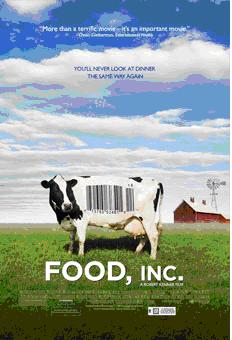



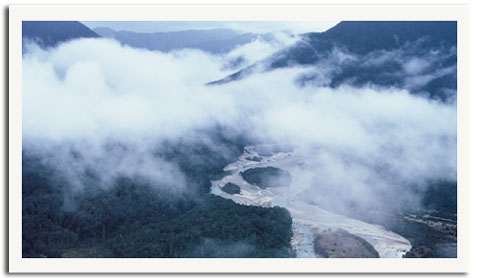
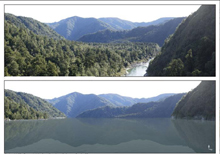
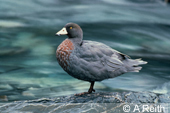
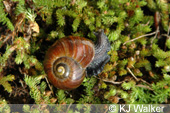
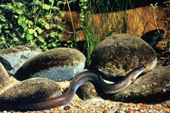
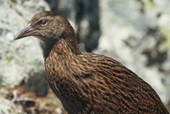
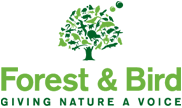
.jpg) Green:
Green:.jpg) Orange:
Orange:.jpg) Red:
Red:.jpg) Orange:
Orange: